What are pocket doors?
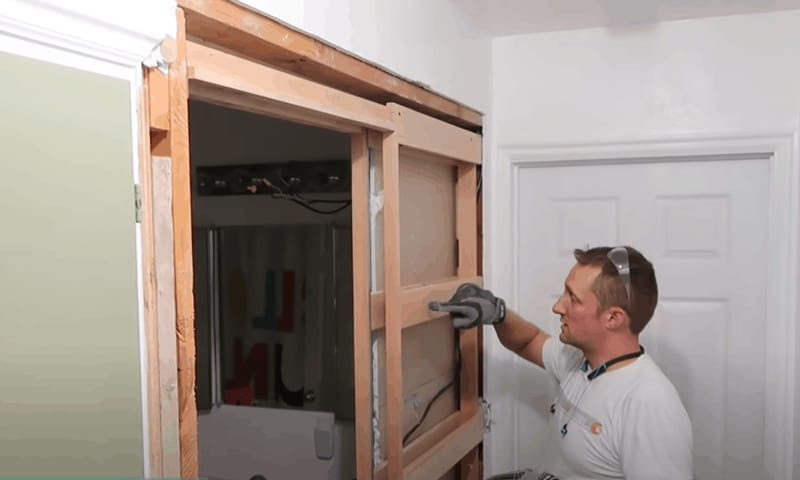
Pocket doors are sliding doors that disappear into a compartment, or “pocket,” inside the wall when fully open. They are a space-saving solution for interior design, as they do not require the floor space needed for traditional swinging doors. Pocket doors are commonly used in tight spaces, such as small rooms, closets, and bathrooms, where conventional doors may be impractical or inefficient.
Pocket doors consist of a door panel, a track system mounted inside the wall, and hardware, such as rollers and handles. When the door is opened, it slides along the track and into the pocket of the wall, becoming virtually invisible. This design allows for greater flexibility in room layout and furniture placement while maintaining a clean, uncluttered appearance when the doors are open.
How do pocket doors work?

Pocket doors work using a combination of a sliding track system and a specially constructed wall compartment or “pocket” that houses the door when it is open. Here’s a breakdown of how pocket doors function:
- Door panel: The door panel is typically a solid or hollow core door designed to slide horizontally rather than swing open. It may have a handle, flush pull, or edge pull to help open and close.
- Track system: The track system is mounted inside the wall and runs horizontally along the top of the door opening. It consists of a metal or aluminum track and rollers or gliders. The door panel is attached to the rollers, which enables it to slide smoothly along the track.
- Wall compartment: The wall compartment, or “pocket,” is a hollow space built into the wall adjacent to the door opening. It is designed to accommodate the full width and height of the door panel when it is open. The pocket typically uses wooden or metal studs and drywall or plasterboard.
- Door guides: These are installed at the bottom of the door to keep it aligned and prevent it from swinging or wobbling while sliding. They can be mounted on the floor or the lower part of the door frame.
To operate a pocket door, you grasp the handle, flush pull, or edge pull and slide the door along the track into or out of the wall compartment. The rollers or gliders in the track system allow for smooth and effortless movement. When the door is fully open, it is hidden within the wall pocket, creating an unobstructed passageway between rooms. When closed, the door panel slides out of the pocket and covers the opening, functioning as a traditional door.
What are pocket sliding doors?
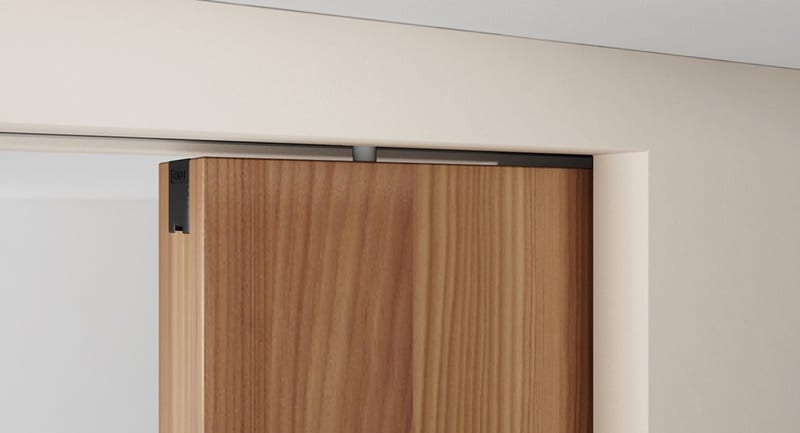
Pocket sliding doors are a type of pocket door that specifically refers to the sliding mechanism used for the door’s operation. They are interior doors that slide into a compartment or “pocket” built into the adjacent wall when opened, saving space and providing a seamless appearance.
Pocket sliding doors consist of the following components:
- Door panel: A solid or hollow core door designed to slide horizontally rather than swing open. It may have a handle, flush, or edge pull for easy operation.
- Track system: A horizontal track mounted inside the wall above the door opening. The track has rollers or gliders that allow the door panel to slide smoothly.
- Wall compartment: A hollow space within the wall specifically designed to accommodate the door panel when fully open. The compartment is constructed using wooden or metal studs and drywall or plasterboard.
- Door guides: These are installed at the bottom of the door to keep it aligned and prevent it from swinging or wobbling while sliding. They can be mounted on the floor or the lower part of the door frame.
Pocket sliding doors are a popular choice for rooms where space is limited, such as small bedrooms, closets, and bathrooms, as they do not require the floor space needed for traditional swinging doors. They offer a clean, uncluttered appearance when open, allowing for greater room layout and furniture placement flexibility.
Pocket door disadvantages and advantages
Pocket doors offer several advantages and disadvantages that should be considered when deciding if they are the right choice for your space.
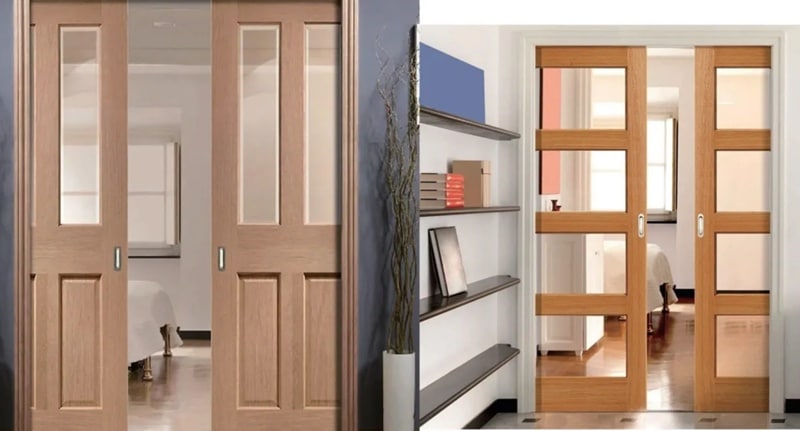
Advantages:
- Space-saving: Pocket doors do not require the swing space needed for traditional hinged doors, making them an ideal solution for small or tight spaces, such as bathrooms, closets, and narrow hallways.
- Unobstructed access: When fully open, pocket doors disappear into the wall, providing a seamless transition between rooms and an unobstructed passageway, particularly helpful for people with mobility issues or when moving large items.
- Design flexibility: Pocket doors offer increased flexibility in room layout and furniture placement, as they don’t occupy wall or floor space when open.
- Aesthetics: Pocket doors provide a clean, minimalistic appearance that can complement various interior design styles.
- Privacy: Pocket doors can separate spaces and provide privacy when needed, such as in bathrooms or bedrooms.
Disadvantages:
- Installation complexity: Installing pocket doors requires more complex framing and construction than traditional doors, which may increase labor and material costs. Additionally, retrofitting a pocket door into an existing wall can be challenging and may require professional assistance.
- Limited wall space: The wall housing the pocket must be free of electrical wiring, plumbing, or other obstructions, which can limit where the door can be installed and reduce available wall space for artwork, shelves, or other features.
- Maintenance: The track and rollers of a pocket door are hidden inside the wall, making them more difficult to access for maintenance or repairs. Over time, the door may become misaligned, or the rollers may wear out, necessitating repairs.
- Sound insulation: Pocket doors generally provide less sound insulation than traditional hinged doors, as they have gaps around the edges and may not seal as tightly.
- Limited door styles: Although pocket doors are available in various styles and materials, they may not offer as wide a selection as traditional doors, which can limit design options.
When considering the advantages and disadvantages of pocket doors, evaluating your specific needs, space limitations, and design preferences is essential to determine if they are the right solution for your project.
What doors to use for pocket doors?
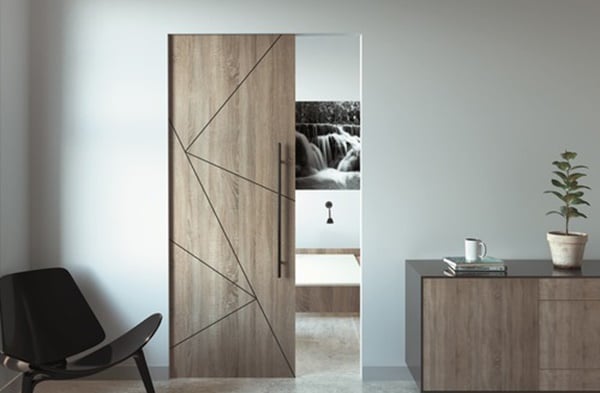
When selecting doors for pocket door installations, several factors are to consider, including the door material, style, thickness, and size. Here are some common options to consider:
- Solid core doors: These are made from solid wood or a composite material, providing better sound insulation, durability, and a higher-quality feel than hollow core doors. They can be heavier, though, requiring stronger hardware and support.
- Hollow core doors: These doors have a hollow interior with a thin veneer or laminate surface. They are lighter and less expensive than solid core doors but offer less sound insulation and can be less durable.
- MDF (Medium Density Fiberboard) doors: MDF doors are made from a composite material of wood fibers and resin. They are smooth and consistent in appearance, making them suitable for painting. They balance solid core doors’ weight and durability and hollow core doors’ affordability.
- Glass doors: Glass pocket doors are an option for spaces where you want to maintain natural light flow or create a more open and airy feel. They can be fully transparent, frosted, or feature a decorative design. Remember that glass doors can be heavy and may provide less privacy and sound insulation.
- Custom or specialty doors: You can also choose custom-designed or specialty doors that fit your design preferences, such as panel doors, barn-style doors, or doors with unique materials or finishes.
When selecting a door for a pocket door installation, ensure it is compatible with the pocket door hardware and framing. The door’s thickness should match the hardware requirements, and its dimensions should be appropriate for the door opening and pocket size.
It is also essential to consider the desired level of privacy, sound insulation, and the overall aesthetic of the space when choosing a door for a pocket door installation.
What size do pocket doors come in?
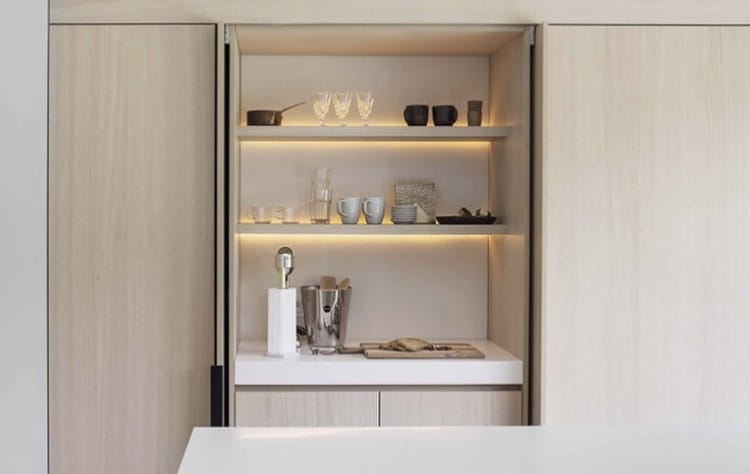
Pocket doors come in various sizes to accommodate door openings and construction requirements. The most common widths and heights for pocket doors are based on standard door sizes. Here are some typical dimensions:
Widths:
- 24 inches (610 mm)
- 28 inches (711 mm)
- 30 inches (762 mm)
- 32 inches (813 mm)
- 36 inches (914 mm)
Heights:
- 80 inches (2032 mm)
- 84 inches (2134 mm)
- 96 inches (2438 mm)
Some standard sizes are available, but pocket doors can be custom-made to fit non-standard openings or unique design requirements. When selecting a pocket door size, it is essential to consider the dimensions of the door opening and the available wall space for the pocket.
Remember that the pocket door frame and hardware will have specific size requirements, so always consult the manufacturer’s guidelines and recommendations when choosing a door for a pocket door installation. In general, the pocket size should be approximately twice the width of the door panel to accommodate the door when it’s fully open.
Lastly, consider the size and scale of the room, as well as any specific accessibility needs, such as compliance with the Americans with Disabilities Act (ADA) or other local building codes, when determining the appropriate size for your pocket doors.
Pocket door vs. sliding door
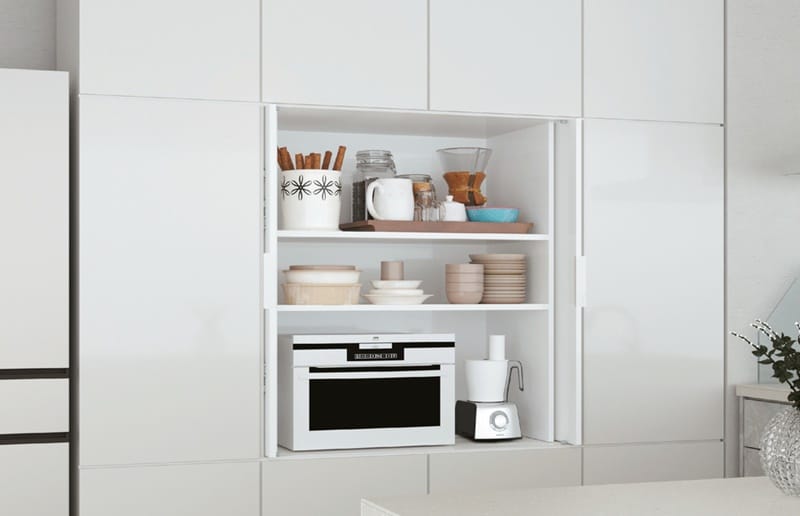
Pocket and sliding doors are space-saving alternatives to traditional hinged doors but have different mechanisms and applications. Here’s a comparison of pocket doors and sliding doors:
Pocket doors:
- Mechanism: Pocket doors slide horizontally into a compartment, or “pocket,” built into the adjacent wall when fully open. They are hidden from view when open.
- Space requirement: Pocket doors require a wall with enough space to accommodate the door panel when it’s fully open. The wall must be free of obstructions such as plumbing or electrical wiring.
- Aesthetics: Pocket doors provide a clean, uncluttered appearance when open, as they are hidden within the wall. This can create a seamless transition between rooms.
- Installation: Installing pocket doors typically requires more complex framing and construction, as well as a specialized pocket door frame and hardware. Retrofitting a pocket door into an existing wall can be challenging and may require professional assistance.
- Privacy and sound insulation: Pocket doors usually offer less sound insulation than traditional doors and may not seal as tightly, potentially affecting privacy.
Sliding doors:
- Mechanism: Sliding doors, also known as barn doors, slide horizontally along a track mounted on the wall or ceiling parallel to the wall. They remain visible when open, covering a portion of the adjacent wall.
- Space requirement: Sliding doors do not require a specially built wall compartment; they need enough wall space adjacent to the door opening to accommodate the door panel when it’s fully open.
- Aesthetics: Sliding doors can create a more distinct visual separation between rooms or spaces, as they remain visible when open. They can also be a design feature, as various styles and materials are available.
- Installation: Installing sliding doors is generally simpler than installing pocket doors, as they only require mounting the track and attaching the door. They can be more easily retrofitted into existing spaces.
- Privacy and sound insulation: Sliding doors typically provide better sound insulation and privacy than pocket doors, as they often have more substantial frames and can create a tighter seal when closed.
Choosing between the pocket and sliding doors depends on available space, aesthetic preferences, privacy and sound insulation needs, and installation complexity. Consider these factors when deciding which door type fits your project best.
Which type of door lock is best for pocket doors?
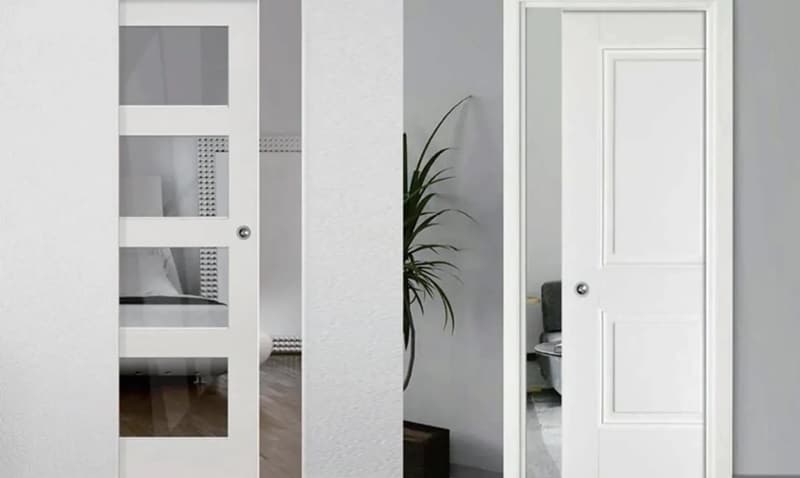
The best lock types for pocket doors are designed to work with the sliding mechanism and the door’s thin profile. Here are some common pocket door lock options:
- Pocket door privacy lock: A privacy lock is typically used for bathrooms or bedrooms, where privacy is essential. It features a latch mechanism that engages with a strike plate on the door frame and has a thumb-turn or push-button on the inside to lock and unlock the door. Some privacy locks also include an emergency release mechanism on the outside, allowing the door to be unlocked in an emergency.
- Pocket door passage lock: A passage lock is used when locking is unnecessary, such as between living spaces or closets. It consists of a simple latch mechanism that keeps the door in place when closed but does not provide a locking function.
- Keyed pocket door lock: This type of lock is suitable for spaces concerned by security. It features a key cylinder on the exterior side and a thumb-turn or push-button on the interior. The door can be locked and unlocked with a key from the outside and with a thumb-turn or push-button from the inside.
- Magnetic pocket door lock: A magnetic lock uses a strong magnet to hold the door when closed, providing a minimalist and clean appearance. While it does not offer the same level of security as a keyed lock, it can be a good option for spaces where privacy is not a primary concern.
When selecting a lock for your pocket door, consider factors such as the level of security or privacy required, the door’s thickness and material, and the overall design aesthetic of the space. Ensure the chosen lock is compatible with the pocket door hardware and installation requirements.

